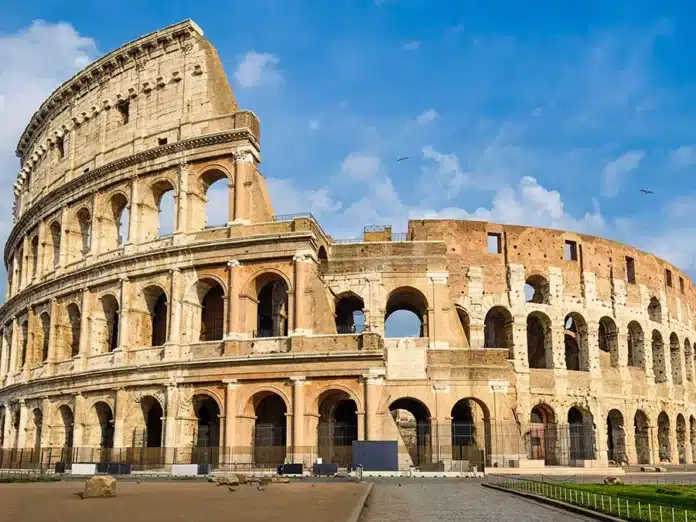Rome, referred to by ancient poets as the Eternal City, is located on the Tiber River. It was founded in 753BC and, along with Florence, was considered one of the major centers of the Renaissance. Although the date for Rome’s founding is considered much later, there is archeological evidence of human occupation from between 10,000 to 14,000 years ago. On our trip to Rome, we were impressed by the old buildings and partial structures that are evidence of their long history.
On our first day there, we set out with a map, a vague idea where many of the attractions were and, of what we wanted to see. We saw partial structures, some appearing to be still in the excavating stages, wonderful old buildings, fountains, churches and statues. One statue was of Julius Caesar in a pose one could imagine him being in when, on the Ides of March he said his final words, ‘Et tu, Brute?’
Arriving at the Colosseum, we were amazed at its size but shouldn’t have been. It once accommodated more than 55,000 spectators who came to watch fights between gladiators and wild animals or sometimes between those who were prisoners. Construction was begun in 72AD and completed in 80AD. There were once eighty entrances, many still quite evident. The ruined portion, according to history, was damaged in an earthquake in 847. You can go inside the Colosseum, however we didn’t. (It went on the ever-growing list for my next visit.) The beauty and resilience of these incredibly old structures continued to amaze me as we looked around. On the same grounds is the Arch of Consontine, built in 314AD, another work of art.
Further along in our explorations of Rome, we came to Palatine Hill. Surrounded by a high metal fence, archeologists are still excavating the ruins of what is believed to be the beginnings of the city. We were too late to go inside and unfortunately, the gates were closed for the evening. But we were able to see quite a lot through the fence. As the day grew later, we crossed the Tiber River, seeing the partial remnants of an old bridge. It seemed that everywhere we looked there were remnants and evidence of antiquity and Rome’s constant determination to unearth its history.
Eventually, with our feet becoming weary, we boarded an open tour bus and travelled the city seeing many of the sights. Early evening was now upon us so we saw a different Rome through the glow of the city’s lights. At one point we saw the Pantheon, built in 118AD. It was converted into a church in 609 and now holds the tombs of Raphael and several Italian kings. Amazingly, the marble floor is still the original. The last stop the bus was making that night was Trevi Fountain, perhaps saving the best for last. This fountain, completed in 1762 is exquisite, a masterpiece of design. The statue of Neptune of the Sea, riding a chariot in the shape of a shell, is pulled by two sea horses. It is the focal point of the fountain with other statues surrounding the display. Although it was nighttime, it was crowded when we were there, which apparently is not unusual.
With a long walk back to our accommodations, a guest house, we realized that it was late and we were much too tired for dinner. We decided instead to stop and pick up some fruit and drinks along the way. The next day was going to be another event-filled and exciting day too.



